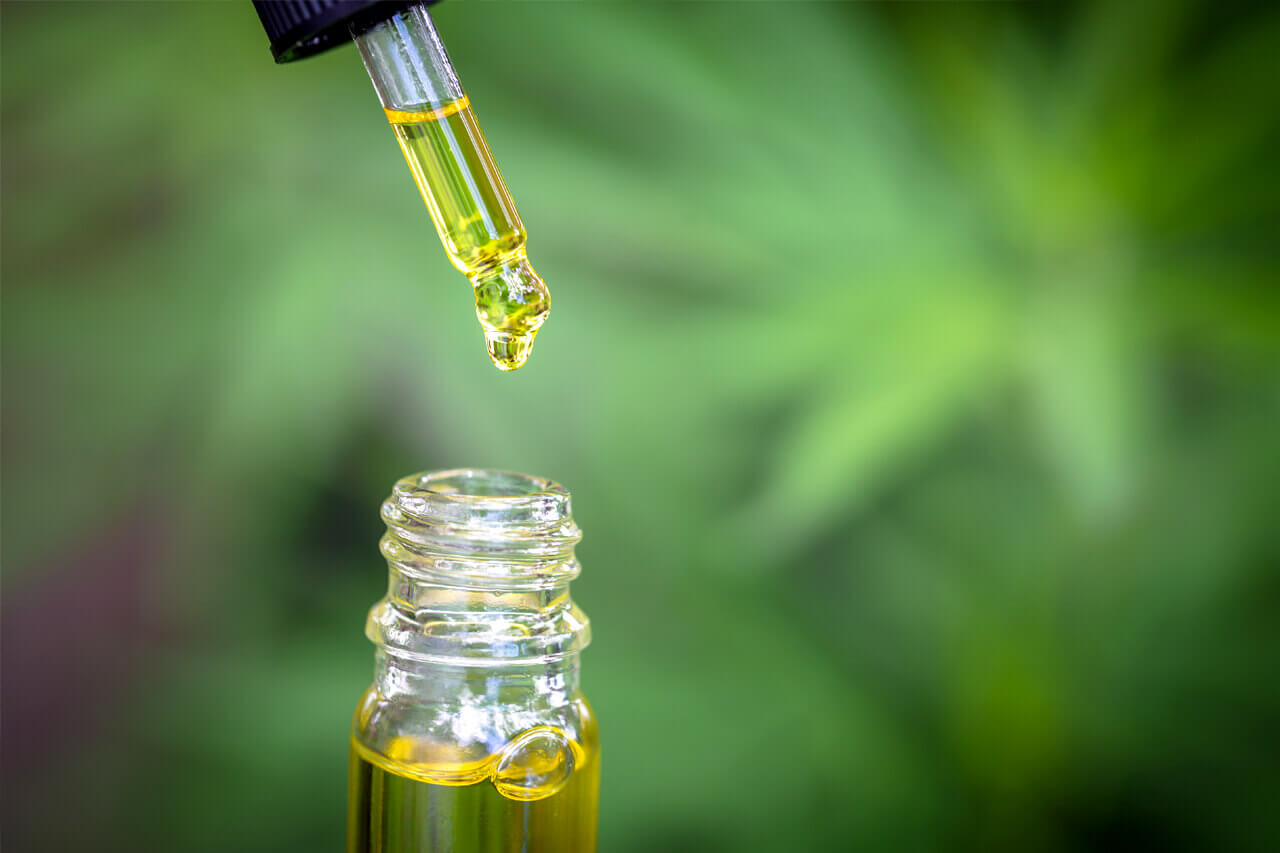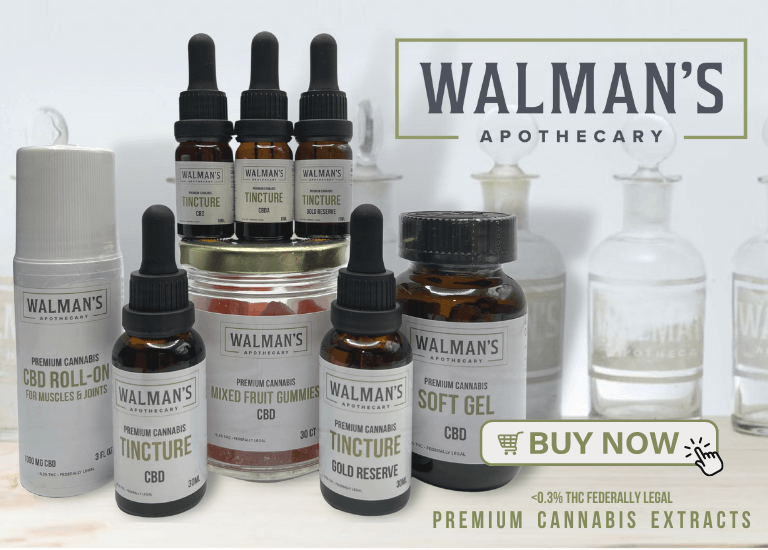Pure CBD oil means different things to different people. If you’re new to cannabidiol (CBD) and you’re thinking of trying it, hopefully this article will help you separate the wheat, er, weed … from the chaff.
What is Pure CBD Oil?
If you do an online search for this question, the highest-ranking results say that pure CBD oil is extracted from the cannabis sativa plant and processed to remove any cannabinoids other than CBD. This is also called CBD isolate.
But don’t stop reading this and search for CBD isolate online because many cannabis experts believe it’s not the type of CBD that offers the most therapeutic value.
That’s because the cannabis plant contains at least 100 cannabinoids. You may be familiar with THC, the most abundant cannabinoid in marijuana; it’s the one that makes you feel high.
CBD is the second-most abundant cannabinoid in the cannabis sativa plant, which can be selectively bred to yield marijuana or hemp.
In hemp, CBD is the most abundant cannabinoid. (Hemp-derived CBD products may not contain more than 0.3% THC; this amount is non-intoxicating.)
But in addition to the well-known cannabinoids THC and CBD, there are several other compounds that may contribute to your physical health and mental well-being.
Full-Spectrum Pure CBD Oil
For instance, there’s other cannabinoids like CBDV, CBG and CBC. Pure CBD oil, depending on the batch grown, contains approximately 6% total CBD, with less than 1% each of these other cannabinoids, and as mentioned, under 0.3% THC.
In addition to cannabinoids, pure CBD oil (which also goes by ‘pure natural CBD oil’ or ‘pure CBD tincture’) contains micropercentages of plant compounds called terpenes and flavonoids. Terpenes are what gives plants their captivating aromas while flavonoids are antioxidants.
Although these additional plant compounds constitute a fraction of pure CBD oil’s makeup, they may play an oversized role in regulating health. The world’s foremost researchers and experts on cannabinoids believe that CBD containing these additional compounds deliver the most therapeutic benefits (or what’s known as the entourage effect).
CBD oil that contains cannabinoids, terpenes and flavonoids is called “full spectrum,” because it contains the full spectrum of chemical constituents naturally found in the cannabis sativa plant.
Side note: The only reason you may wish to consider CBD isolate or broad spectrum CBD oil vs pure, full-spectrum CBD oil is if you work for the CIA or other agency or job that has a strict policy against cannabis. (Broad-spectrum oil contains the CBD-related cannabinoids like CBDV, CBG, CBC, etc., but no THC.)
What Should Pure CBD Oil Look Like?
It should look clear and golden. Full spectrum pure CBD oil is filtered to remove all plant matter besides the therapeutic chemical constituents, those cannabinoids and terpenes you just read about.
Impure, raw, unfiltered CBD oil is green because it contains chlorophyll. Chlorophyll is the green pigment that helps plants convert sunlight into energy.
While chlorophyll helps build red blood cells and increases oxygen capacity in humans, it’s not necessarily a substance that’s desirable in pure CBD oil.
The biggest reason is because chlorophyll does not taste very good. (If you want the health benefits of chlorophyll but not in your pure CBD oil, buy liquid chlorophyll drops.)
What Does Pure CBD Oil Taste Like?
Well, considering CBD comes from hemp, pure CBD oil tastes very much like hemp. If you’ve ever smelled marijuana buds before they become combusted (heated with a lighter or vaporizer), then you’ll have an inkling of what pure CBD oil smells and tastes like.
But it’s important to reiterate that CBD will not get you high.
Should You Take Pure CBD Oil On An Empty Stomach?
Certain nutrients are water-soluble while others only get absorbed with the assistance of dietary fat. CBD is better absorbed with fat. But you don’t have to wake up and cook a side of bacon and eggs to wash down your CBD oil.
Pure CBD extract has a carrier oil added to it. The best carrier oil is MCT oil. MCT stands for “medium-chain triglycerides.” MCT oil has become popular because of low carb/ketogenic diets.
The reason why MCT oil is superior to other carrier oils is because it’s metabolized very quickly and doesn’t get stored as body fat like other fats do. That’s a bonus for your waistline and your health because the pure CBD oil will help activate your body’s internal cannabinoid receptors known as the endocannabinoid system, or ECS.
Pure CBD Oil and The Endocannabinoid System
The ECS, which all mammals have, is found throughout the body and controls virtually every aspect of physiology. In essence, the ECS maintains Yin/Yang harmony in the body. But because of stress, poor diet, lack of exercise, alcohol and drug abuse, the ECS becomes imbalanced, leading to a whole laundry list of potential problems.
But even with a properly-functioning ECS, the receptors have to be activated frequently. This is why many CBD experts and enthusiasts recommend taking full-spectrum CBD oil once or twice per day.
Is Pure CBD Oil Legal?
CBD extracts derived from industrial hemp, containing less than 0.3% THC became legal in all 50 US states with passage of the Hemp Farming Act of 2018.
With passage of the act, hemp and hemp seeds were removed from the Drug Enforcement Agency (DEA) schedule of controlled substances; hemp-derived products, after nearly a half-century, were once again commercially available. But that doesn’t mean that companies marketing pure CBD oil can make claims stating that their hemp extract can cure or treat any diseases.
The Federal Drug Administration has only approved one CBD for pharmaceutical use (to treat two different types of epilepsy disorders).
What Should Pure CBD Oil Contain?
Only cannabinoids and terpenes!
When purchasing a CBD product, do some due diligence and make sure the brand that you’re considering prominently displays a certificate of analysis (COA), provided by a third-party research entity.
COAs test for impurities such as mycotoxins (disease-causing fungal organisms like aflatoxin); chemical solvents such as acetone, hexane and propane; heavy metals (arsenic, lead, mercury and cadmium); pesticides, and dangerous microbes (salmonella, listeria, e. Coli).
If you can’t find that info on the website, it’s not pure CBD oil like this one.

